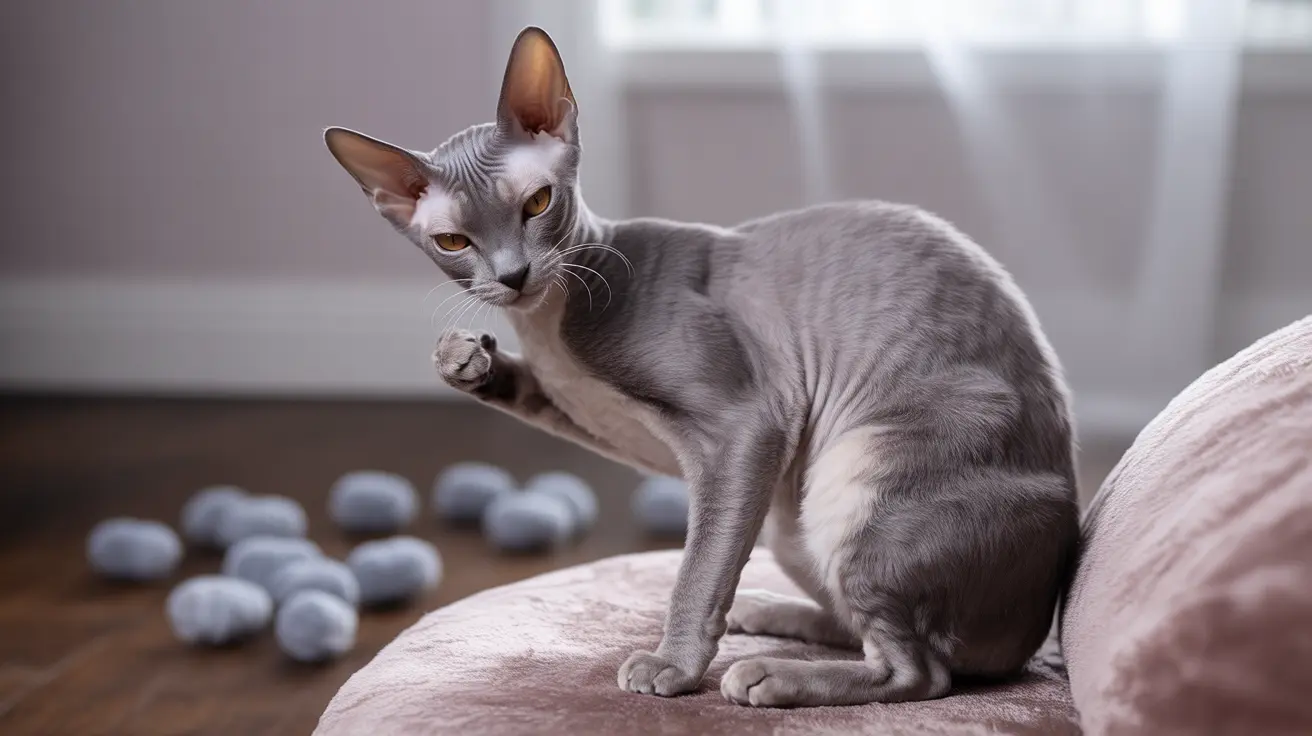As a cat owner, you've likely observed your feline friend engaging in various scratching behaviors. While scratching is a natural part of cat behavior, understanding why cats scratch themselves and recognizing when it becomes excessive is crucial for maintaining your pet's health and well-being.
From normal grooming habits to potential medical concerns, let's explore the various reasons behind cat scratching and learn how to identify when this common behavior might signal a need for veterinary attention.
Natural Scratching Behaviors in Cats
Cats naturally scratch themselves as part of their daily grooming routine. This behavior helps them remove loose fur, dead skin cells, and maintain their coat's cleanliness. Regular self-scratching also allows cats to stretch their muscles and maintain flexibility in their joints.
Additionally, scratching serves as a way for cats to mark their territory through scent glands in their paws. Even indoor cats who live alone maintain this instinctual behavior as part of their natural repertoire.
Common Causes of Excessive Scratching
Parasitic Infections
Fleas are the most common culprit behind excessive scratching in cats. These tiny parasites cause intense itching, particularly around the neck, base of the tail, and belly. Other parasites like ear mites, mange mites, and ticks can also trigger persistent scratching.
Allergic Reactions
Cats can develop allergies to various environmental factors, including:
- Food ingredients
- Pollen
- Dust mites
- Cleaning products
- Laundry detergents
These allergies often manifest as skin irritation, leading to increased scratching and potential skin damage.
Behavioral and Environmental Factors
Sometimes, excessive scratching stems from psychological rather than physical causes. Stress, anxiety, and boredom can all contribute to increased scratching behavior. Changes in the household, such as new pets, moving homes, or alterations in routine, may trigger stress-related scratching.
Medical Conditions
Several health conditions can cause increased scratching:
- Skin infections
- Dermatitis
- Hormonal imbalances
- Autoimmune disorders
- Neurological conditions
When to Seek Veterinary Care
If your cat's scratching becomes excessive or you notice any of these warning signs, consult your veterinarian:
- Hair loss or bald patches
- Red, inflamed skin
- Scabs or open sores
- Changes in behavior or appetite
- Visible parasites or flea dirt
Prevention and Treatment
Managing cat scratching involves a multi-faceted approach:
- Regular flea prevention treatment
- Routine grooming and nail maintenance
- Environmental enrichment with toys and scratching posts
- Stress reduction techniques
- Appropriate diet and nutrition
- Regular veterinary check-ups
Frequently Asked Questions
Why do cats scratch themselves and what are the normal reasons behind this behavior?
Cats naturally scratch themselves for grooming, removing loose fur and dead skin, stretching muscles, and marking territory through scent glands in their paws. This behavior is part of their normal daily maintenance routine.
What are the common medical causes of excessive self-scratching in cats?
Common medical causes include flea infestations, allergies, skin infections, dermatitis, hormonal issues, and autoimmune conditions. Parasites like ear mites and mange can also cause excessive scratching.
How can I tell if my cat's scratching is due to parasites like fleas or allergies?
Look for signs such as visible fleas or flea dirt (black specks in the fur), red or irritated skin, hair loss, and concentrated scratching in specific areas like the neck or base of the tail. Allergies often cause more generalized itching and may be seasonal.
What are effective ways to prevent my cat from scratching furniture and damaging the home?
Provide multiple scratching posts in different locations, use deterrent sprays on furniture, maintain regular nail trimming, and ensure environmental enrichment through toys and play sessions. Positive reinforcement can help redirect scratching to appropriate surfaces.
When should I take my cat to the vet for persistent or raw scratching?
Seek veterinary care if you notice excessive scratching accompanied by hair loss, skin wounds, behavioral changes, or if the scratching persists despite home remedies. Immediate attention is needed if you observe open sores or signs of infection.






